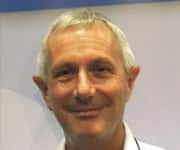Life Extension Magazine®
In the last week of May 2014, thousands of exercise scientists gathered at the Orlando, Florida, convention center for the fifth World Congress on Exercise is Medicine®, the world’s largest and most prestigious conference about medical issues related to exercise. The conference is sponsored by the American College of Sports Medicine.
Health Hazards Of Physical Inactivity

I-Min Lee, MD, ScD, (Professor, Harvard Medical School) opened the conference with a lecture on the health hazards of physical inactivity. Physical inactivity is believed to lead to about as many premature deaths worldwide as smoking.1 Although most people are aware that physical inactivity is a health hazard, Dr. Lee said that the foremost question asked about exercise and health is: “How little physical activity can I get away with?”
One study she cited estimated that two-and-a-half hours of brisk walking per week would reduce the risk of heart disease 14%, whereas five hours per week would result in a 20% reduction.2 Exercise to prevent cardiovascular disease or type II diabetes has a benefit that is comparable to the use of prescription drugs.3 Aside from a general improvement in health, exercise can reduce premature deaths due to breast cancer,4,5 colon cancer,5 type II diabetes,5 and other diseases.5
Higher levels of physical activity are associated with longer life expectancy more than moderate levels of activity.6 Driving or doing office work is physically sedentary, but watching television is associated with more eating and drinking of unhealthy foods and beverages. Prolonged television viewing is associated with increased risk of type II diabetes, cardiovascular disease, and all-cause mortality.7
As people become older, they become increasingly sedentary,8 only partly because of an increase in disabilities.9
Exercise For Type II Diabetes

Luc van Loon, PhD, (Professor, Maastricht University, the Netherlands) has studied the effects of exercise, particularly on patients with type II diabetes. He has studied both endurance exercise (aerobic exercise, sustained activity) and resistance exercise (muscle building by lifting weights). He showed that a single session of resistance exercise improves insulin sensitivity in healthy subjects for at least 24 hours, an effect that had previously been shown for endurance exercise.10
Glycated hemoglobin (hemoglobin A1c) measures the amount of damage blood sugar causes to blood hemoglobin over extended time periods. High levels of glycated hemoglobin indicate that blood sugar is too high too much of the time. A study of type II diabetics found that glycated hemoglobin could not be reduced by either endurance or resistance exercise alone, but could only be reduced by a combination of both endurance and resistance exercise.11
Dr. van Loon uses continuous glucose monitoring systems to study the blood sugar levels of type II diabetics throughout the day. By this means he has determined, despite using medications intended to control blood sugar, that diabetes patients experienced excessive blood sugar after meals. For almost 40% of the day, every day, blood sugar was elevated in the diabetic patients he studied.12 He showed that a single session of endurance or resistance exercise reduces the excess blood sugar in type II diabetics by about a third for a 24-hour period.13

Dr. van Loon cites the recommendations of the American Diabetes Association that type II diabetics should engage in 150 minutes per week of moderate intensity aerobic exercise as well as engage in resistance exercise.14
Jonathan Little, PhD, (Assistant Professor, University of British Columbia, Canada) has also studied the effects of exercise for type II diabetes. But Dr. Little has been interested in the effects of High-Intensity Interval Training (HIIT), which involves repeated bursts of vigorous exercise interspersed with periods of rest. He has shown that 75 minutes of HIIT per week is an attractive option and takes less time than the 150 minutes weekly of moderate intensity exercise recommended by the American Diabetes Association.15 Adherence to HIIT exercise programs is reportedly better than adherence to continuous moderate exercise programs.16 HIIT before a meal is more effective at lowering mealtime high blood sugar than regular moderate exercise.17
Exercise For The Elderly

Maria Singh, MD, (Professor, University of Sydney, Australia) is interested in the effects of exercise and the elderly. In an eight-week study of elderly people who were depressed, she was able to show a dose-response relationship. Specifically, higher intensity of resistance training was associated with a greater reduction in depression.18 She said that depressed persons have reduced amounts of the brain growth factor brain-derived neurotrophic factor (BDNF). While aerobic exercise reduces depression, it increases the amount of BDNF in the brain, and thereby reduces the brain atrophy that normally results from the decline of BDNF that occurs with aging.19
Although exercise does not extend maximum life span, exercise improves health and thus extends the average duration of life.20
Exercise For Frailty And Disability
Carol Garber, PhD, (Associate Professor, Columbia University) is interested in the relationship between frailty, heart failure, and exercise. She cited a study concluding that physical inactivity among the elderly doubles the risk of subsequent disability.21 Slow walking speed (an indicator of frailty) is associated with a high risk of cardiovascular disease.22
Dr. Garber is particularly interested in congestive heart failure, the condition in which the heart is unable to pump adequate amounts of blood to meet the needs of the body.23 Heart failure is characterized by greatly reduced exercise capacity and shortness of breath. Heart failure is the leading cause of hospitalization for persons over age 65.24 As recently as 30 years ago, bed rest was the recommended treatment for heart failure. Now exercise is recommended, even if the exercise must begin at a very slow and modest level.25 A study of heart failure patients found that they have high levels of fat within their muscles, which contributes to muscle weakness.26
Daniel Forman, MD, (Associate Professor, Harvard Medical School) is also interested in heart failure. He cited a study showing that extensive bed rest worsens many of the health deficits associated with aging, and in particular, detrimental changes to the heart.24 He also cited results from the Baltimore Longitudinal Study of Aging, which showed that aerobic capacity (peak oxygen consumption in exercise) declines at an increasing rate with age, even in exercisers, although the exercisers will nonetheless have higher aerobic capacity than nonexercisers.27
Fasting And Athletic Performance

Nancy Rodriguez, PhD, (Professor, University of Connecticut) is interested in the effects of fasting on athletic performance, especially on the performance of elite Muslim athletes competing in major events such as the Olympics during the religious fasting at Ramadan.28
Although fasting does not inhibit exercise-induced muscle damage in human subjects,29 experiments with rats show that fasting improves the ability to cope with stress.30 A similar benefit was seen in rats that were fed every other day. The rats were not calorie restricted because they ate double the amount of food on the days they were fed.31 At least one experiment demonstrates a difference between rats and humans in this regard. Humans fed every other day for 12 weeks reduced their total food intake, losing an average of 6% body weight.32
Exercise For Fatigue

Timothy Puetz, PhD, (Presidential Management Fellow, US National Institutes of Health) reported on his efforts to study the effects of exercise on fatigue. Only about 1% of the population suffers from chronic fatigue syndrome, but roughly one in five people report persistent feelings of fatigue.33,34 Feelings of fatigue are defined as a reduced capacity to complete mental or physical tasks.
Although the biological basis of muscular fatigue is well-understood, the biological mechanism of feeling general fatigue is not.34 Studies have reported reduced fatigue in persons who had been sedentary, and then adopted programs of regular aerobic or resistance exercise.33 Nonetheless, designing effective placebo conditions for such studies can be challenging.35
Less controversial is the fact that exercise has been shown to reduce the fatigue that the majority of cancer victims experience when undergoing chemotherapy or radiation therapy.36
Exercise For The Immune System

Michael Gleeson, PhD, (Professor, Loughborough University, England) is an expert in the effects of exercise on the immune system. He is the lead editor of the book Exercise Immunology, which was created to be the first university textbook on the subject.
Cardiovascular disease and type II diabetes are associated with inflammatory blood proteins (cytokines) that are present in quantities two or three times greater than normal.37 Inflammation is also a feature of both physical inactivity and aging.38 Exercise has been shown to reduce inflammation and to increase insulin sensitivity in both human and rodent experiments.39-42 Mouse experiments indicate that exercise can also reduce inflammation due to a high-fat diet.43
Although regular moderate exercise reduces the rate of upper respiratory tract infections, prolonged and strenuous bouts of exercise increase the rates of those infections.44,45 Ingestion of certain nutrients can reduce the cortisol and inflammation response to highly strenuous exercise.46,47 DHEA (dehydroepiandrosterone) can also oppose depression of the immune system by cortisol (which normally occurs with aging).48-50
Summary
The fifth World Congress on Exercise is Medicine® took place in May 2014. Dr. I-Min Lee opened with a lecture on the danger of physical inactivity, which may cause as many premature deaths worldwide as smoking. Dr. Luc van Loon showed that a single session of resistance training improved insulin sensitivity for 24 hours in healthy subjects, while Dr. Maria Singh discussed how resistance training is associated with a greater reduction in depression.
Exercise for frailty and disability were topics discussed by Drs. Carol Garber and Daniel Forman. Nancy Rodriguez, PhD, talked about fasting and athletic performance, and Dr. Timothy Puetz reported on fatigue and exercise. Exercise and the immune system expert Dr. Michael Gleeson led a symposium titled “Regulation of Inflammation in Skeletal Muscle with Exercise.”
If you have any questions on the scientific content of this article, please call a Life Extension® Health Advisor at 1-866-864-3027.
References
- Wen CP, Wu X. Stressing harms of physical inactivity to promote exercise. Lancet. 2012 Jul 21;380(9838):192-3.
- Sattelmair J, Pertman J, Ding EL, Kohl HW 3rd, Haskell W, Lee IM. Dose response between physical activity and risk of coronary heart disease: a meta-analysis. Circulation. 2011 Aug 16;124(7):789-95.
- Naci H, Ioannidis JP. Comparative effectiveness of exercise and drug interventions on mortality outcomes: metaepidemiological study. BMJ. 2013 Oct 1;347:f5577.
- Wu Y, Zhang D, Kang S. Physical activity and risk of breast cancer: a meta-analysis of prospective studies. Breast Cancer Res Treat. 2013 Feb;137(3):869-82.
- Lee IM, Shiroma EJ, Lobelo F, Puska P, Blair SN, Katzmarzyk PT, Lancet Physical Activity Series Working Group. Effect of physical inactivity on major non-communicable diseases worldwide: an analysis of burden of disease and life expectancy. Lancet. 2012 Jul 21;380(9838):219-29.
- Moore SC, Patel AV, Matthews CE et al. Leisure time physical activity of moderate to vigorous intensity and mortality: a large pooled cohort analysis. PLoS Med. 2012;9(11):e1001335.
- Grøntved A, Hu FB. Television viewing and risk of type II diabetes, cardiovascular disease, and all-cause mortality: a meta-analysis. JAMA. 2011 Jun 15;305(23):2448-55.
- Matthews CE, George SM, Moore SC, et al. Amount of time spent in sedentary behaviors and cause-specific mortality in US adults. Am J Clin Nutr. 2012 Feb;95(2):437-45.
- Rimmer JH, Marques AC. Physical activity for people with disabilities. Lancet. 2012 Jul 21;380(9838):193-5.
- Koopman R, Manders RJ, Zorenc AH, et al. A single session of resistance exercise enhances insulin sensitivity for at least 24 h in healthy men. Eur J Appl Physiol. 2005 May;94(1-2):180-7.
- Church TS, Blair SN, Cocreham S, et al. Effects of aerobic and resistance training on hemoglobin A1c levels in patients with type II diabetes: a randomized controlled trial. JAMA. 2010 Nov 24;304(20):2253-62.
- Van Dijk JW, Manders RJ, Hartgens F, Stehouwer CD, Praet SF, van Loon LJ. Postprandial hyperglycemia is highly prevalent throughout the day in type II diabetes patients. Diabetes Res Clin Pract. 2011 Jul;93(1):31-7.
- van Dijk JW, Manders RJ, Tummers K, et al. Both resistance- and endurance-type exercise reduce the prevalence of hyperglycaemia in individuals with impaired glucose tolerance and in insulin-treated and non-insulin-treated type II diabetic patients.Diabetologia .2012 May;55(5):1273-82.
- Sigal RJ, Kenny GP, Wasserman DH, Castaneda-Sceppa C, White RD. Physical activity/exercise and type II diabetes: a consensus statement from the American Diabetes Association. Diabetes Care. 2006 Jun;29(6):1433-8.
- Little JP, Gillen JB, Percival ME, et al. Low-volume high-intensity interval training reduces hyperglycemia and increases muscle mitochondrial capacity in patients with type II diabetes. J Appl Physiol (1985). 2011 Dec;111(6):1554-60.
- Kessler HS, Sisson SB, Short KR. The potential for high-intensity interval training to reduce cardiometabolic disease risk. Sports Med. 2012 Jun 1;42(6):489-509.
- Francois ME, Baldi JC, Manning PJ, et al. ‘Exercise snacks’ before meals: a novel strategy to improve glycaemic control in individuals with insulin resistance. Diabetologia. 2014 Jul;57(7):1437-45.
- Singh NA, Stavrinos TM, Scarbek Y, Galambos G, Liber C, Fiatarone Singh MA. A randomized controlled trial of high versus low intensity weight training versus general practitioner care for clinical depression in older adults. J Gerontol A Biol Sci Med Sci. 2005 Jun;60(6):768-76.
- Erickson KI, Miller DL, Roecklein KA. The aging hippocampus: interactions between exercise, depression, and BDNF. Neuroscientist. 2012 Feb;18(1):82-97.
- Booth FW, Laye MJ, Roberts MD. Lifetime sedentary living accelerates some aspects of secondary aging. J Appl Physiol (1985). 2011 Nov;111(5):1497-504.
- Visser M, Simonsick EM, Colbert LH, et al. Type and intensity of activity and risk of mobility limitation: the mediating role of muscle parameters. J Am Geriatr Soc. 2005 May;53(5):762-70.
- Afilalo J, Karunananthan S, Eisenberg MJ, Alexander KP, Bergman H. Role of frailty in patients with cardiovascular disease.Am J Cardiol . 2009 Jun 1;103(11):1616-21.
- Available at: http://www.nlm.nih.gov/medlineplus/ency/article/000158.htm. Accessed August 20, 2014.
- Arbab-Zadeh A, Dijk E, Prasad A, et al. Effect of aging and physical activity on left ventricular compliance. Circulation. 2004 Sep 28;110(13):1799-805.
- Keteyian SJ. Exercise training in congestive heart failure: risks and benefits. Prog Cardiovasc Dis. 2011 May-Jun;53(6):419-28.
- Haykowsky MJ, Kouba EJ, Brubaker PH, Nicklas BJ, Eggebeen J, Kitzman DW. Skeletal muscle composition and its relation to exercise intolerance in older patients with heart failure and preserved ejection fraction. Am J Cardiol. 2014 Apr 1;113(7):1211-6.
- Fleg JL, Morrell CH, Bos AG, et al. Accelerated longitudinal decline of aerobic capacity in healthy older adults. Circulation. 2005 Aug 2;112(5):674-82.
- Maughan RJ, Zerguini Y, Chalabi H, Dvorak J. Ramadan and football. Achieving optimum sports performance during Ramadan: some practical recommendations. J Sports Sci. 2012;30 Suppl 1:S1.
- Dannecker EA, Liu Y, Rector RS, et al. The effect of fasting on indicators of muscle damage. Exp Gerontol. 2013 Oct;48(10):1101-6.
- Wan R, Camandola S, Mattson MP. Intermittent food deprivation improves cardiovascular and neuroendocrine responses to stress in rats. J Nutr. 2003 Jun;133(6):1921-9.
- Anson RM, Guo Z, de Cabo R, et al. Intermittent fasting dissociates beneficial effects of dietary restriction on glucose metabolism and neuronal resistance to injury from calorie intake. Proc Natl Acad Sci U S A. 2003 May 13;100(10):6216-20.
- Varady KA, Bhutani S, Klempel MC, et al. Alternate day fasting for weight loss in normal weight and overweight subjects: a randomized controlled trial. Nutr J. 2013 Nov 12;12(1):146.
- Puetz TW, O’Connor PJ, Dishman RK. Effects of chronic exercise on feelings of energy and fatigue: a quantitative synthesis. Psychol Bull. 2006 Nov;132(6):866-76.
- Puetz TW. Physical activity and feelings of energy and fatigue: epidemiological evidence. Sports Med. 2006;36(9):767-80.
- Herring MP, O’Connor PJ. The effect of acute resistance exercise on feelings of energy and fatigue. J Sports Sci. 2009 May;27(7):701-9.
- Puetz TW, Herring MP. Differential effects of exercise on cancer-related fatigue during and following treatment: a meta-analysis. Am J Prev Med. 2012 Aug;43(2):e1-24.
- Petersen AM, Pedersen BK. The anti-inflammatory effect of exercise. J Appl Physiol (1985). 2005 Apr;98(4):1154-62.
- McFarlin BK, Flynn MG, Campbell WW, et al. Physical activity status, but not age, influences inflammatory biomarkers and toll-like receptor 4. J Gerontol A Biol Sci Med Sci. 2006 Apr;61(4):388-93.
- Timmerman KL, Flynn MG, Coen PM, Markofski MM, Pence BD. Exercise training-induced lowering of inflammatory (CD14+CD16+) monocytes: a role in the anti-inflammatory influence of exercise? J Leukoc Biol. 2008 Nov;84(5):1271-8.
- Kawanishi N, Yano H, Yokogawa Y, Suzuki K. Exercise training inhibits inflammation in adipose tissue via both suppression of macrophage infiltration and acceleration of phenotypic switching from M1 to M2 macrophages in high-fat-diet-induced obese mice. Exerc Immunol Rev. 2010;16:105-18.
- Oliveira AG, Carvalho BM, Tobar N, et al. Physical exercise reduces circulating lipopolysaccharide and TLR4 activation and improves insulin signaling in tissues of DIO rats. Diabetes . 2011 Mar;60(3):784-96.
- Oliveira AG, Araujo TG, Carvalho BM, et al. Acute exercise induces a phenotypic switch in adipose tissue macrophage polarization in diet-induced obese rats. Obesity (Silver Spring). 2013 Dec;21(12):2545-56.
- Vieira VJ, Valentine RJ, Wilund KR, Woods JA. Effects of diet and exercise on metabolic disturbances in high-fat diet-fed mice. Cytokine. 2009 Jun;46(3):339-45.
- Gleeson M, Bishop N, Oliveira M, McCauley T, Tauler P, Muhamad AS. Respiratory infection risk in athletes: association with antigen-stimulated IL-10 production and salivary IgA secretion. Scand J Med Sci Sports. 2012 Jun;22(3):410-7.
- Gleeson M, Bishop N, Oliveira M, Tauler P. Influence of training load on upper respiratory tract infection incidence and antigen-stimulated cytokine production. Scand J Med Sci Sports. 2013 Aug;23(4):451-7.
- Gleeson M. Can nutrition limit exercise-induced immunodepression? Nutr Rev. 2006 Mar;64(3):119-31.
- Davison G, Gleeson M, Phillips S. Antioxidant supplementation and immunoendocrine responses to prolonged exercise. Med Sci Sports Exerc. 2007 Apr;39(4):645-52.
- Buford TW, Willoughby DS. Impact of DHEA(S) and cortisol on immune function in aging: a brief review. Appl Physiol Nutr Metab. 2008 Jun;33(3):429-33.
- Bauer ME. Chronic stress and immunosenescence: a review. Neuroimmunomodulation. 2008;15(4-6):241-50.
- Bauer ME. Stress, glucocorticoids and ageing of the immune system. Stress. 2005 Mar;8(1):69-83.

